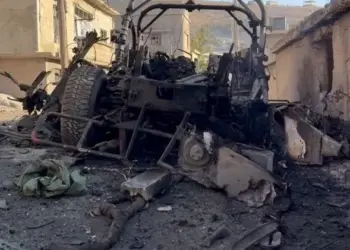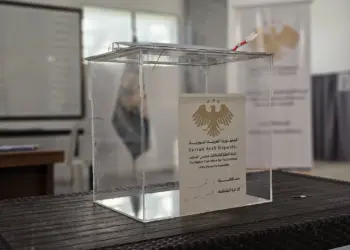In 2011, Syrians took to the streets demanding urgent political reforms and inclusive governance, aiming to end decades of cronyism and corruption under the Assad regime. With Bashar al-Assad now outside the country, the country’s interim authorities have the rare opportunity to begin building a state based on these demands. However, the interim cabinet, announced on 29th March by interim President Ahmad al-Shara’a, does not reflect this. The cabinet, whose members include just four minority representatives—with one Alawi, one Druze, one Christian and one Kurdish member—carries the veneer of inclusivity but actually further consolidates control under al-Shara’a and Hay’at Tahrir al-Sham (HTS). While the inclusion of individuals from diverse communities and the appointment of technocrats suggest a nod towards modernization and inclusion, the overall structure and power dynamics of the cabinet reveal a deeper strategy of authoritarian consolidation. The dominance of former HTS affiliates in key ministries, the exclusion of genuine representative mechanisms and the absence of legislative oversight all point to an interim government more concerned with consolidating power than building a genuinely inclusive governance model. Along with the international community, Syrian civil society must continue to closely scrutinize and hold to account the work of the interim government.
Power consolidation
The new cabinet was announced on 29th March at the Presidential Palace, with around 150 figures from civil society and media present. Unsurprisingly, key ministries remain under the control of individuals affiliated with HTS, including: the Ministry of Interior (Anas Khattab, who also serves as Director of the General Intelligence Service), Ministry of Defense (Murhaf Abu Qasra, formerly head of HTS’ Shaheen Brigades), Ministry of Foreign Affairs (Asaad al-Shaibani) and Ministry of Justice (Mezher al-Wais, formerly head of the Syrian Salvation Government’s Supreme Judicial Council). Of the 23 overall appointees, nine have links to HTS and/or HTS’ Idlib-based Syrian Salvation Government. Al-Shara’a’s brothers also hold influential positions: Maher al-Shara’a serves as Secretary-General of the Presidency (as chief-of-staff), while Hazem al-Shara’a heads the High Committee for Investment, overseeing economic policy and foreign deals.
The cabinet’s formation accompanied significant structural reforms that also further consolidated power under the presidency. To start, the position of the prime minister has been abolished, while the overall number of ministries has been reduced from 30 (under Assad) to 23. Despite the inclusion of some technocrats, governance structures and decision-making processes remain largely under the control of former HTS affiliates. That said, the presence of technocrats is a positive sign, and their inclusion may offer a degree of service provision capacity. Should they be allowed to function independently and be provided with sufficient resources, they could play a meaningful role in rebuilding institutional capacity. Taken as a whole, these drastic decisions have been taken unilaterally by the presidency, bypassing the process of legislative scrutiny or debate. The absence of any such deliberation highlights a worrying trend towards executive overreach and power consolidation.
Performative inclusion
The inclusion of individuals from Syria’s diverse communities as ministers appears geared more toward appeasing international observers than genuine power-sharing or representative governance. The new cabinet includes one Alawi (Yaroub Badr, minister of transport), one Druze (Amjad Badr, minister of agriculture), one Christian (Hind Qabawat, minister of social affairs and labor), and one Kurd (Muhammad Abdelrahman Turko, minister of education). Among them, Qabawat is the only woman in the cabinet. It remains to be seen how much power these ministers will be afforded under al-Shara’a, but their appointments alone reflect a performative inclusion aimed at projecting diversity. Notably, these individuals have been appointed as independents, not as elected representatives of their communities or members of legally recognized political parties, which have yet to be legalized.
The interim government currently lacks input legitimacy—that is, legitimacy based on transparent selection processes and representative decision-making. Appointments in the new cabinet appear designed to consolidate power under al-Shara’a and to project an image of legitimacy to the international community. At present, the openness shown by the ex-HTS-led leadership likely reflects the fact that they have not yet fully consolidated their power, rather than a genuine commitment to pluralism or democracy. The true test of Syria’s immediate post-Assad period will lie not in the presentation of the government, but in whether it delivers meaningful, accountable governance worthy of the sacrifices of the Syrian people.




